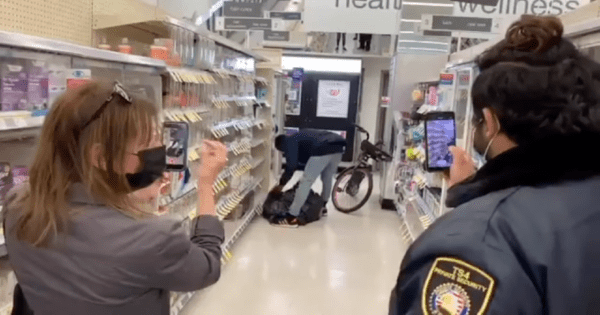
Retail property crime shakes California, with the problem now large enough to close stores, displace families, and impact large corporations. It is maybe costing each family hundreds of dollars.
It isn’t just petty shoplifting by the impoverished transients or bored teenagers that is cause for alarm. Although the pandemic has caused casual shoplifting to increase as well. People needing to make ends meet with reduced or no work, and mask mandates in stores hiding faces embolden otherwise honest people. Stores with reduced staff due to government pandemic unemployment assistance paying people to stay unemployed means greater opportunity for would be thieves.
Perhaps most importantly are the changes to the laws in California determining what is classified as a felony or misdemeanor. In 2014 California voters passed Proposition 47 with 59% approval. Prop. 47 re-categorizes some nonviolent crimes as misdemeanors. A handful of property crimes such as shoplifting, receiving stolen property, fraud, and forgery are deemed misdemeanors if the damages do not exceed $950.
The viral videos we see across our screens are due to Organized Retail Crime (ORC) which is on the rise across the nation, but seems to be a bigger problem in California. Criminals quickly filling trash bags, back packs, and large reusable shopping bags in plain sight during daylight hours. Videos of perpetrators seemingly with no concern they are being recorded are viewed by thousands if not millions.
National File started reporting on the organized retail crime in California over a year ago. The crime happened in Alameda and can be seen in the following YouTube video.
Due to the fear of violence and personal injury lawsuits stores tell employees to not intervene with the thieves. Security Guard Kevin Greathouse was interviewed by the local San Francisco ABC affiliate outside a Walgreens. Video shows him explaining, “It’s going to be lawsuits, obviously they don’t want ourselves or anybody else to get injured while we’re out here attempting to make these apprehensions and leave it to law enforcement.”
Despite having lethal and non-lethal weapons on him to defend himself he remarked, “I don’t have any intention of getting stabbed for $60 worth of stuff.” A viral video from inside a San Francisco Walgreens shows security watching a alleged shoplifter stuff merchandise into a bag and ride his bike out of the store.
Another video shows multiple employees at a San Francisco CVS watch a group place items into bags and backpacks. When one store employee tries to hinder the ongoing theft the suspected shoplifters become violent. At that point even the security guard has to step in but seems ineffective in the narrow aisle.
These are just a few of the videos that can be found online. Professional thieves know employees including security are very likely not to interfere with their illegal activities if it is contained to property crime.
They ignore store personnel while they complete their crime knowing police almost certainly won’t show up unless they are very close to the store. Police have bigger crimes to investigate than misdemeanor theft when the victim is a large national corporation. As noted above store security largely leaves the apprehensions to police so criminals act with near impunity. The videos only show one element of the ORC rings, however. There are many players.
‘Boosters’ are individuals working by themselves or within a team of boosters. They are going into stores to acquire the merchandise. They are generally after small items with long or no expiration dates and a high resale value. Boosters sell the stolen wares to ‘fences’ or ‘crew leaders’ for pennies on the dollar. Even though the media report a high dollar amount stolen from a store a booster will get a fraction of the retail price. Even so the reward is greater than the risk in their minds.
Fences might need to ‘clean’ the products provided by the boosters by removing stickers, and anti-theft devices that would identify the item as already being sold to a retail location. After potentially repackaging stolen products the fences can then either sell the items through various channels including online marketplaces such as Amazon, eBay, Craigslist, and Facebook Marketplace, or sell it to a ‘diverter’.
Diverters are more like wholesalers. They sell to retailers so they have both legitimate products and products obtained through theft. In some cases retailers are unknowingly buying back the exact same product they had stolen from them. Retailers have defined the problem. They know the traits of what ORC looks like. They are now trying to mitigate the impact.